Making PPC work for HVAC is simple. But being simple doesn't mean it's easy.
Clicks don't pay the bills. Customers do.
This guide will teach you the fundamentals of what it takes to build PPC campaigns that actually generate customers and not just traffic.
You'll learn the metrics that matter, how to target the right people at the right time with the right message, and most importantly, how to avoid the costly mistakes that will just waste your money and time.
If you're considering PPC for the first time, don't expect to get everything right the first time. Bookmark this guide. Start with the basics, test what you learn, then come back as you encounter new challenges. The concepts will make more sense as you gain experience, and you'll pick up details every time.
What is HVAC PPC?
All "pay-per" advertising models describe what you're paying for. For example, you can pay for placement, consumption, clicks, or leads. Pay-per-click (PPC) is a digital advertising model where advertisers only pay each time someone clicks on their ad.
Examples of PPC Ads
PPC is not Google Ads or Facebook Ads.
Google Ads and Meta Ads are advertising platforms, not advertising models. A platform is who you pay, a model is how you pay.
This is what paid search ads look like on Google Search.
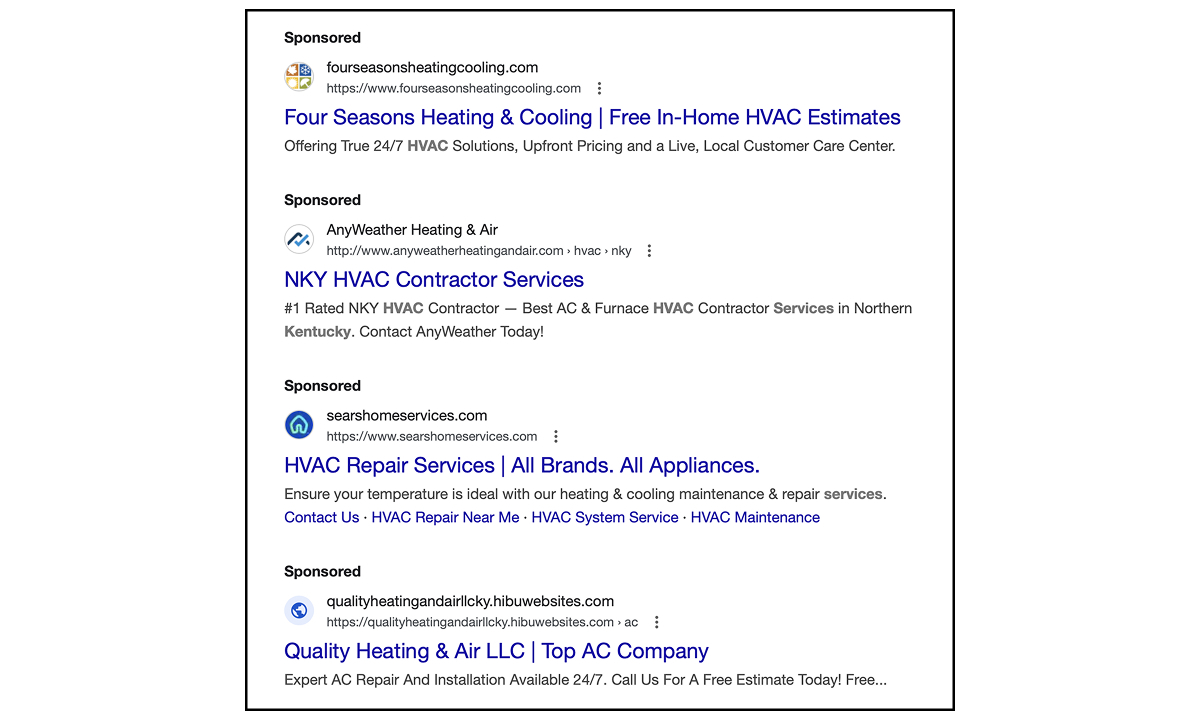
But don't confuse Local Services Ads, which use a Pay-Per-Lead model, with Local PPC Ads, which use a Pay Per Click model.
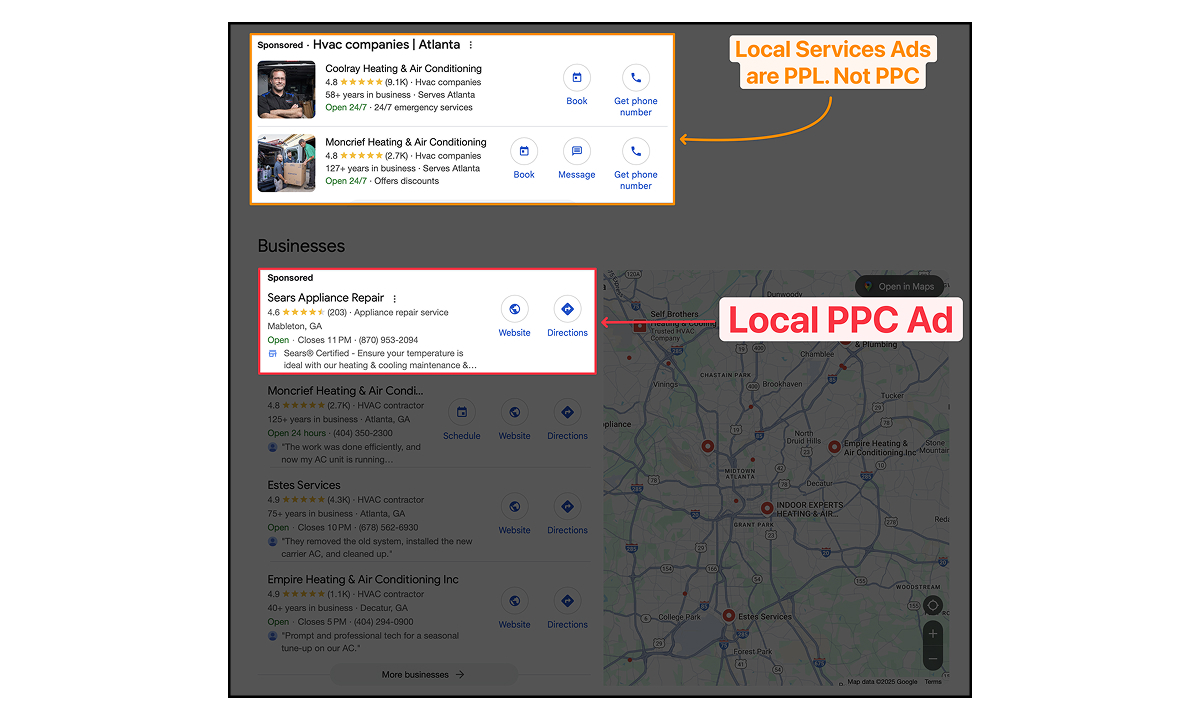
And these are examples of what meta ads can look like in the feed.
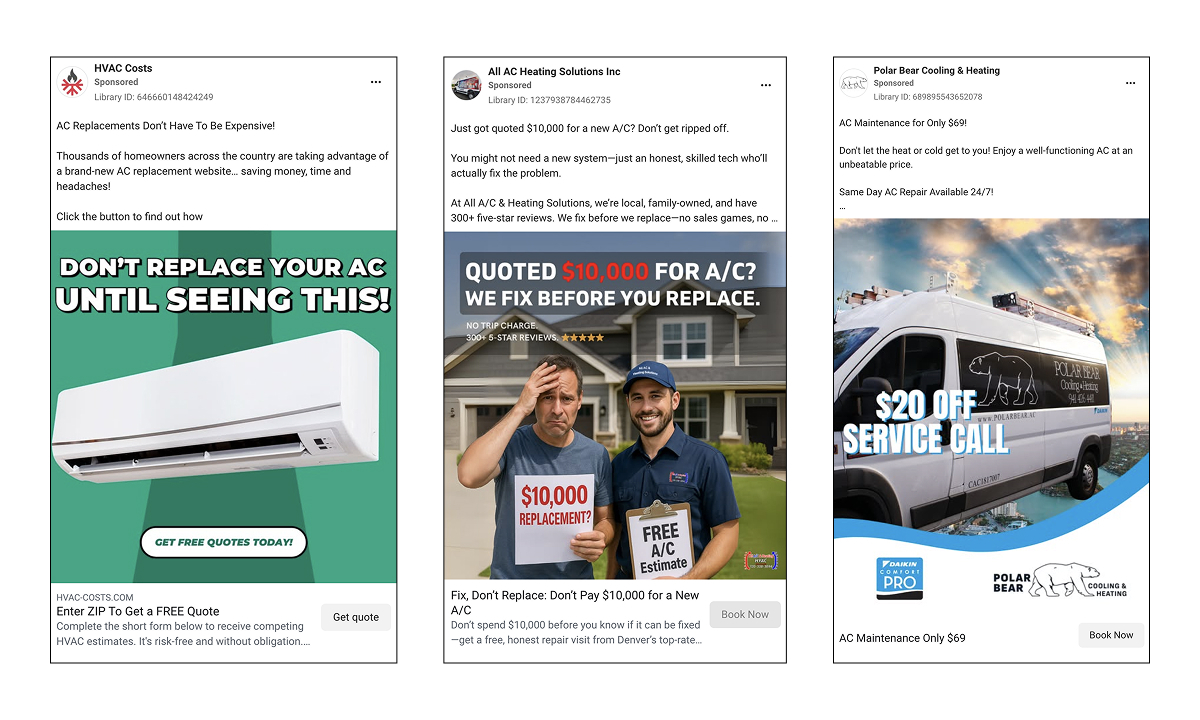
PPC is great whenever you want to get traffic to your website. Google Search Ads are great when you want to get people actively looking for your service to your website. Facebook and Instagram PPC ads are great when you want to reach people who could benefit from your services but weren't actively looking for them.
How PPC Auctions Work
Every time someone searches or scrolls, a lightning-fast auction takes place behind the scenes where advertisers bid against one another to win the auction. This is a core part of digital advertising: you're not buying ad space outright, you're bidding for placement in real-time.
This real-time bidding (RTB) determines whose ad shows up, where, and when. You can control the amount you're willing to pay, but that alone doesn't decide whether you win or not.
Most platforms calculate some form of Ad Rank, which is typically a blend of:
- Bid: The max you're willing to pay
- Quality Score: How relevant and useful your ad and landing page are
- Expected Impact: How well the ad is likely to perform based on the information and assets it provides.
So, even with a lower bid, you can win if your ad is more relevant to the person it's going to be shown to.
Most ad platforms give you additional ways to dynamically change things. For example, you can adjust how much you're willing to bid based on things like what type of device the person is on, where they're physically located, or the time of day.
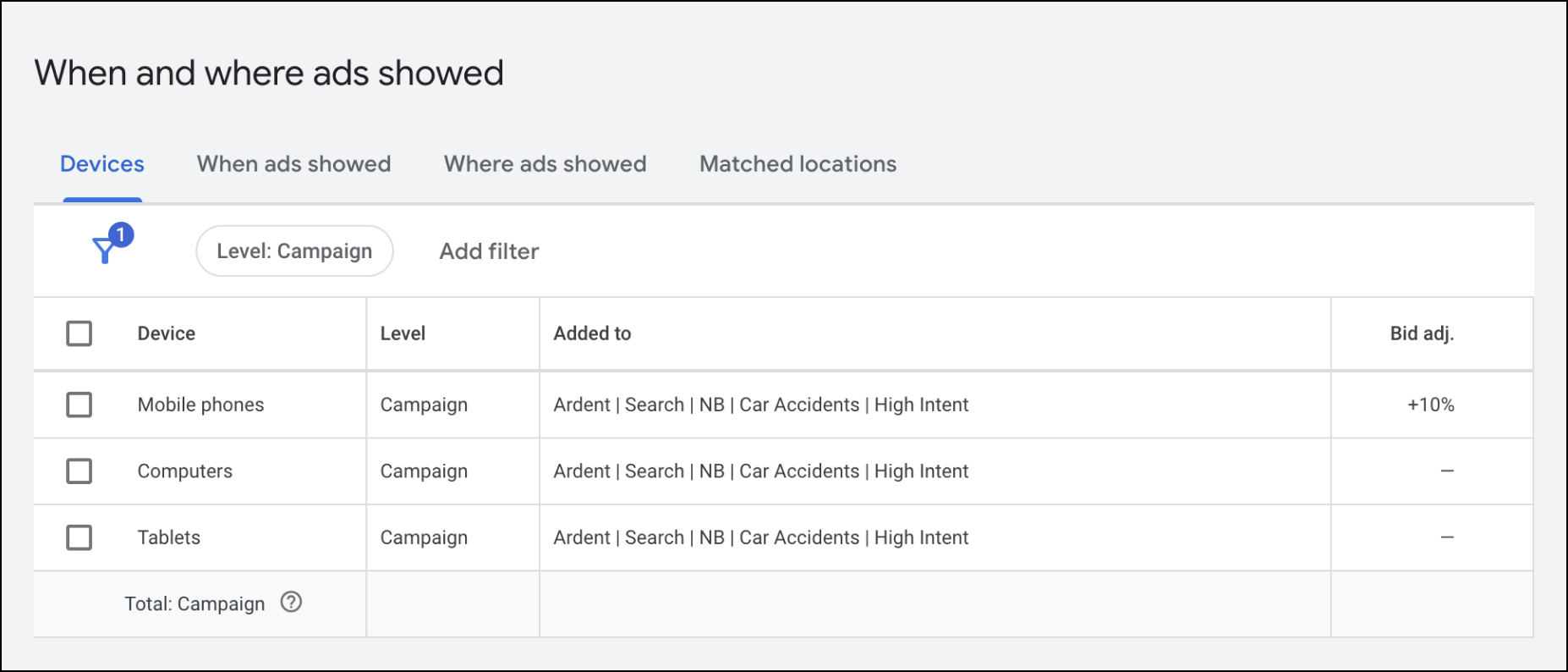
For example, if most of your HVAC emergency calls are from mobile users after 5 pm, you could increase the amount you're willing to bid by 25% during evenings. Or, if you want customers from a specific zip code, you can increase the amount you're willing to bid for that zip code and lower it for surrounding zip codes.
The more valuable the placement, the more competition you can expect to go up against. For example, let's say you're doing Google Search Ads. Bidding on ac repair near me during a heatwave will likely cost more because every smart HVAC company wants those clicks. The more businesses targeting the same keyword or audience, the higher the price will be to win.
| Platform | Primary Factor | Secondary Factors | Best For |
|---|---|---|---|
| Google Search | Keywords | Quality Score | High-intent search traffic |
| Google Display | Audience | Creative Relevance | Retargeting, broad awareness |
| Facebook/IG | Audience | Engagement History | Demographic & interest targeting |
| YouTube | Video Engagement | Targeting Settings | Branding, tutorials, reviews |
| Native Ads | Content Fit | CTR History | Content marketing, advertorials |
Choosing the Right Format
Use Search Ads to advertise to people who have an immediate need. For example, if someone searches for hvac repair near me, they're likely ready to call and hire someone. These types of ads capture demand that already exists.
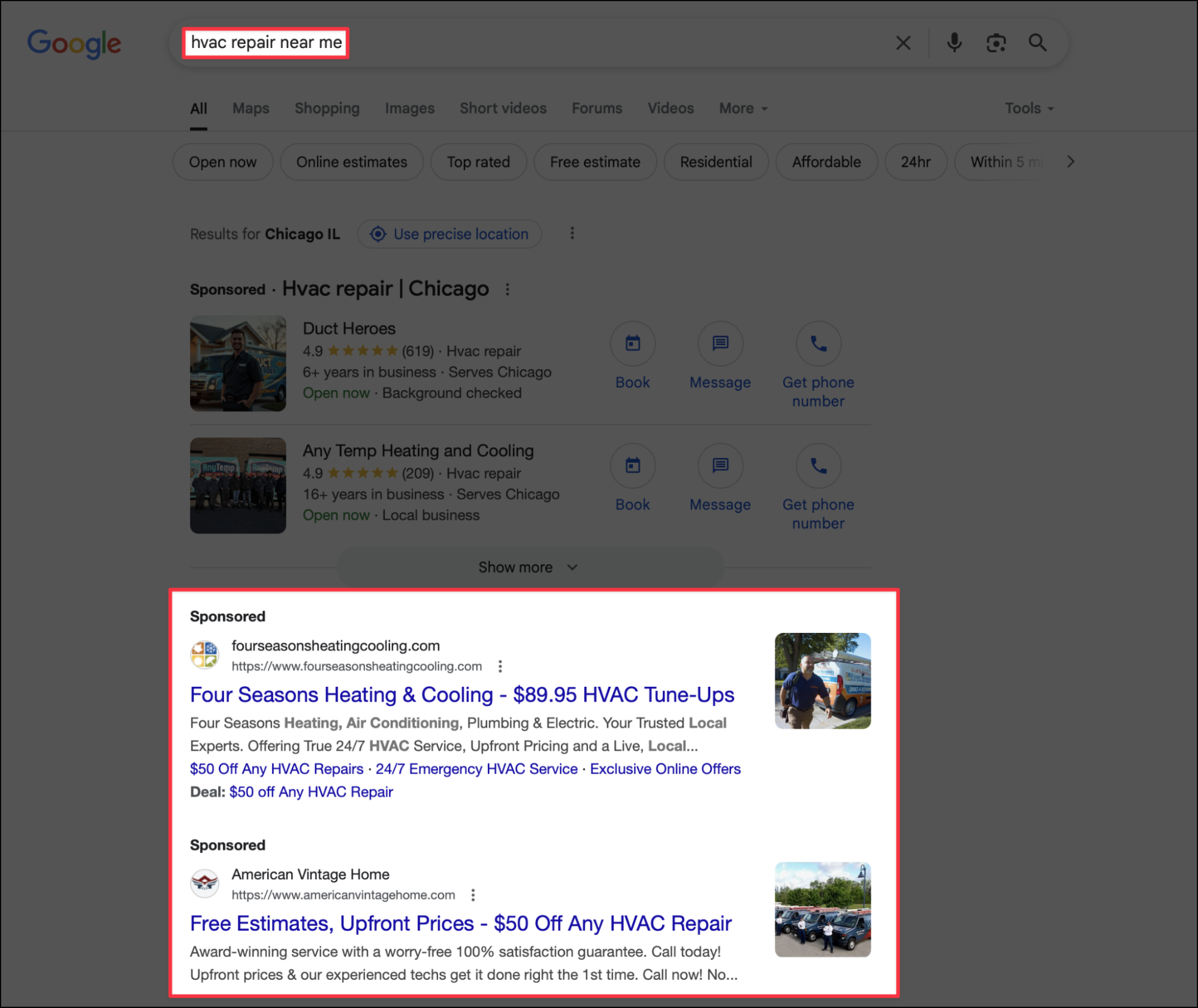
Display and Social ads are better for advertising to people based on who they are. For example, homeowners in your service area (even if they're not actively looking for your service).
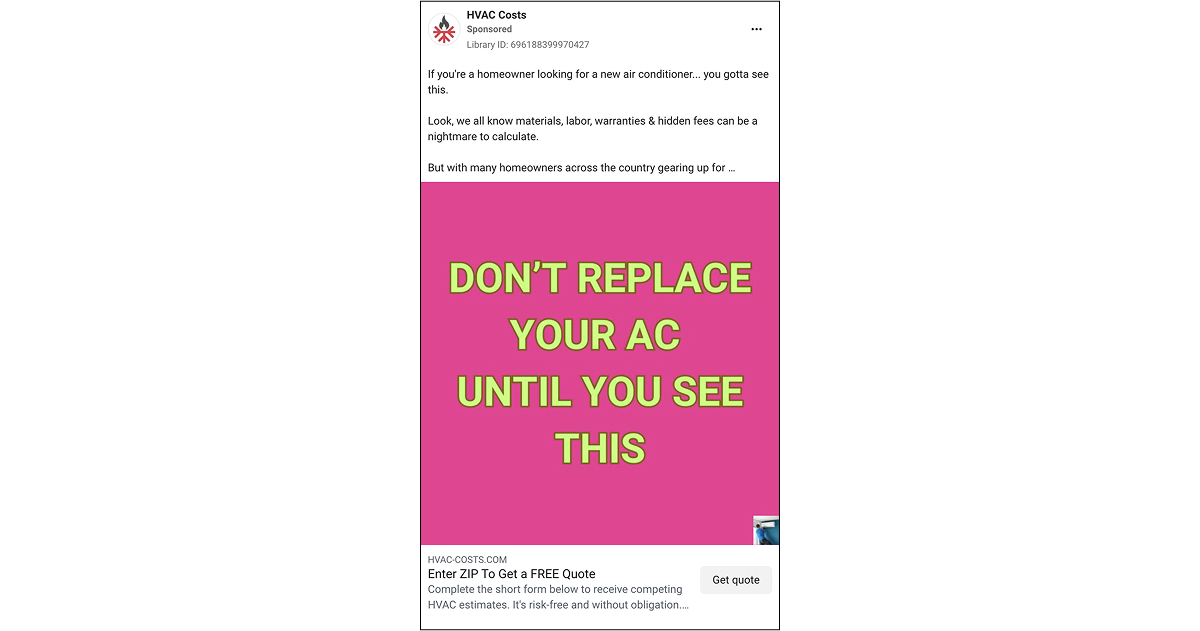
These types of ads are great when you want to show ads to people who've already visited your site (this is called retargeting) or are running some sort of limited-time offer.
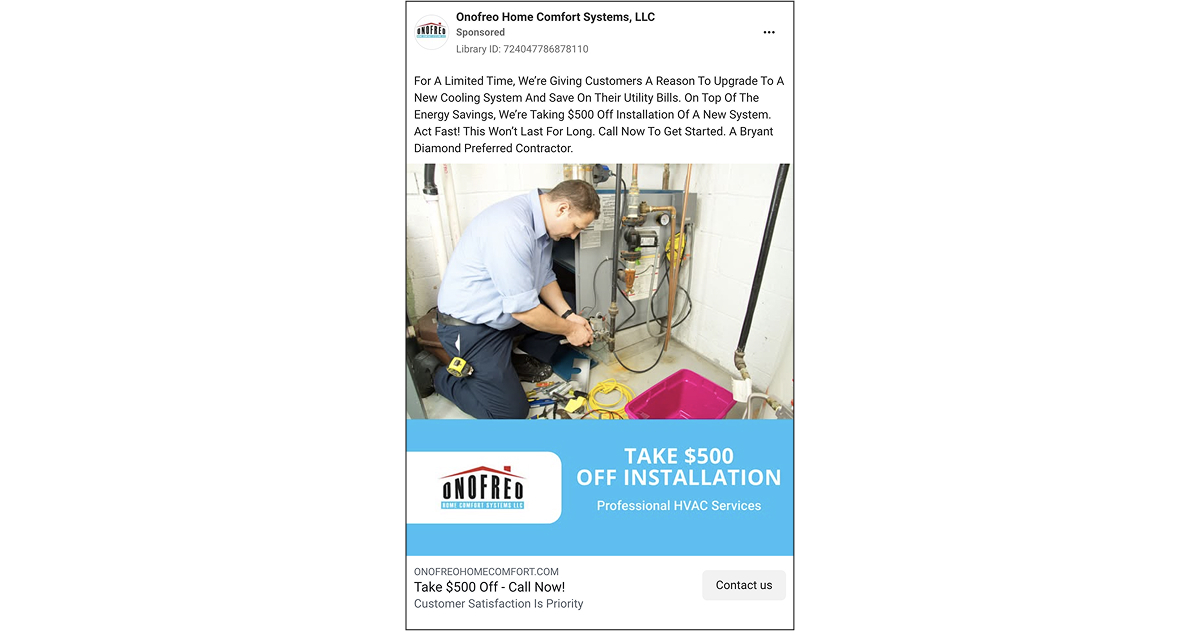
You're only paying when someone clicks, so these are great for getting new people to visit your site or bringing back folks who’ve been there before.
How Much Does PPC Cost?
Most HVAC business owners ask, "How much does PPC cost?" But the better questions to ask are:
1. How much is a customer worth to my business?
2. How much does it cost to get a new customer?
Both are financial metrics. The first is also called Lifetime Value (LTV), and the second is something we call Customer Acquisition Cost (CAC).
Lifetime Value (LTV) isn't just what a customer pays you—it's what you keep after subtracting your costs to serve them. If it helps, another way to think about it is as Lifetime Gross Profit (LTGP), not just lifetime revenue.
Let's say you've serviced the same customer multiple times over the past six years and invoiced them for a total of $5,000, but it cost you $2,000 in labor and parts to service them, your LTV is $3,000.
Customer Acquisition Costs (CAC) isn't just your ad spend. It also includes everything you pay for marketing and sales (ad spend, labor, software, etc.).
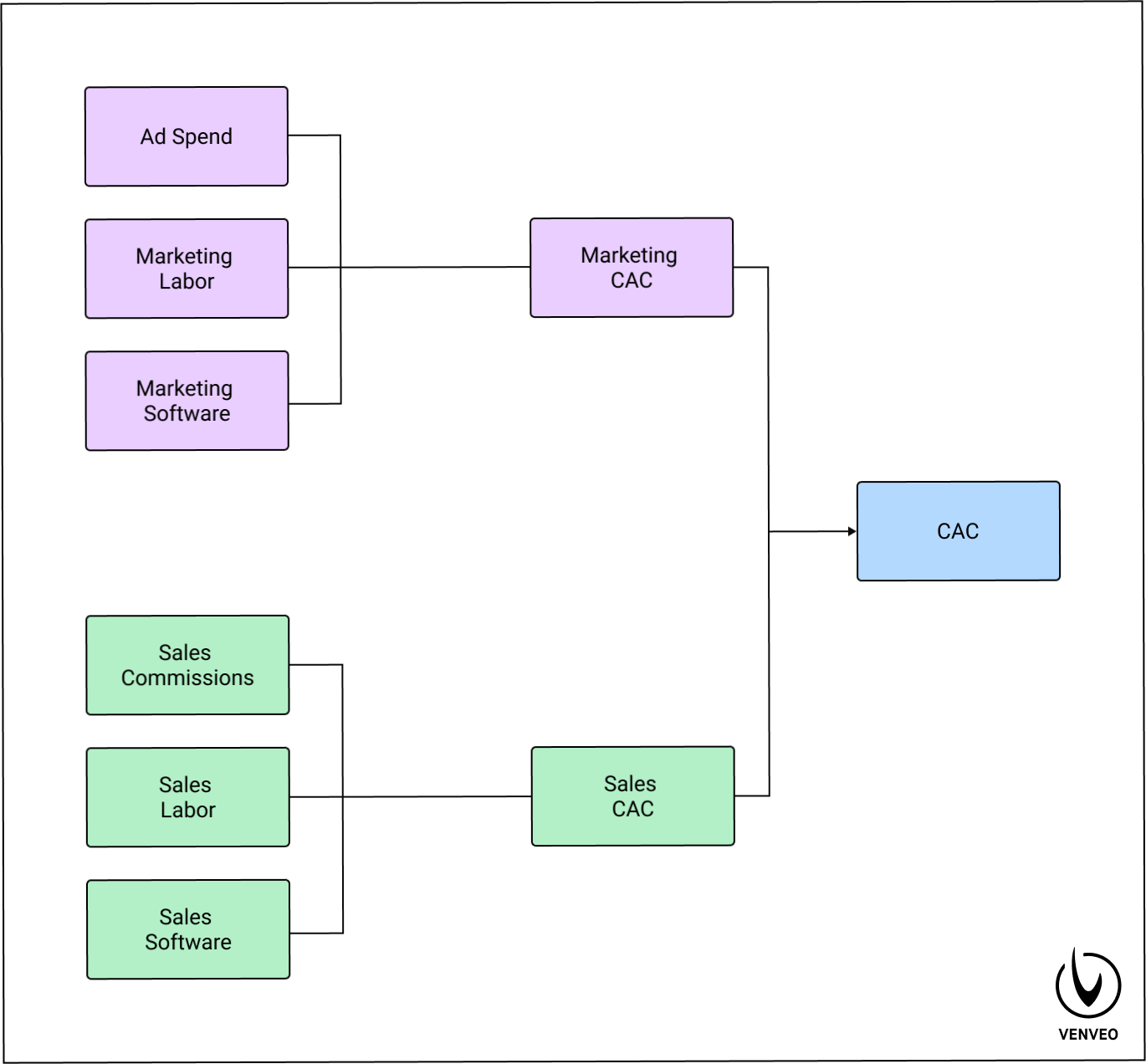
Let's say you spend $5000 per month on ads, $1500 per month to an agency to manage them, and you get an average of 13 new customers per month. That means your CAC is $500.
What really matters is the ratio between LTV and CAC. If you make $3,000 in gross profit and spend $500 to get it, that’s a 6:1 return.
That's a good return. And that's the math that matters.
Should You Do PPC Yourself or Hire Someone?
Whether to do it yourself or hire someone comes down to a question of time, skill, and budget. No matter what platform you choose, you're going to need to map out your strategy, write ad copy, build landing pages, configure all the tracking, and make constant adjustments.
If you have the time and are willing to learn, doing it yourself might make sense. But you also need the budget to pay for the learning curve, too.
You will make mistakes, you will have inefficiencies. That's just part of the process when you're starting and doing it yourself.
It will take longer to get results, and you may spend more figuring out what works than you would if you just hired someone with experience.
You have to decide for yourself whether you have the time, skills, and budget to manage it on your own, or whether your money is better spent on someone else.
Don't get hung up looking for agencies that only service HVAC companies. They do well from a tactical standpoint, but they're typically weaker on the creative front. Most creative geniuses get bored too quickly and don't stick around long.
Instead, look for agencies with success across plumbing, electrical, roofing, etc. The customer psychology is identical, and they usually have better talent working on your ads.
PPC vs SEO
Choosing between PPC and SEO can feel tough when you're working with a limited marketing budget. Especially when different people give you conflicting advice.
Maybe you've read an article on an SEO agency's website telling you to do SEO because the value it returns compounds over time, while another website tells you to invest in PPC to get leads faster with more predictability.
If you need leads now, especially during peak seasons when emergency calls spike, PPC gives you speed and control. You can start showing up when people are urgently searching for help you can provide.
SEO takes longer to get traction. And there's no guarantee all your bets will even pay off.
But that doesn't mean you should ignore SEO. You just need a smarter way to reduce the guesswork and uncertainty.
Validate SEO with PPC First
One of the smartest ways to approach this is to use PPC to test what messages, offers, and keywords actually convert into leads and customers. Then use those insights to guide your SEO strategy.
That way, you’re not guessing what content to rank for—you’re doubling down on what’s already proven to work.
Once you've used PPC to figure out which services, messages, and offers bring you leads, you can build or optimize pages on your website around those exact things. These become your “proven winners.”
Then, you focus your SEO efforts on getting those pages to rank, since you already know they convert when traffic lands on them.
Once those pages start ranking well and bringing in leads organically, you now have two paths working together: SEO brings in free leads, and PPC can shift its budget to testing new keywords, services, or seasonal offers.
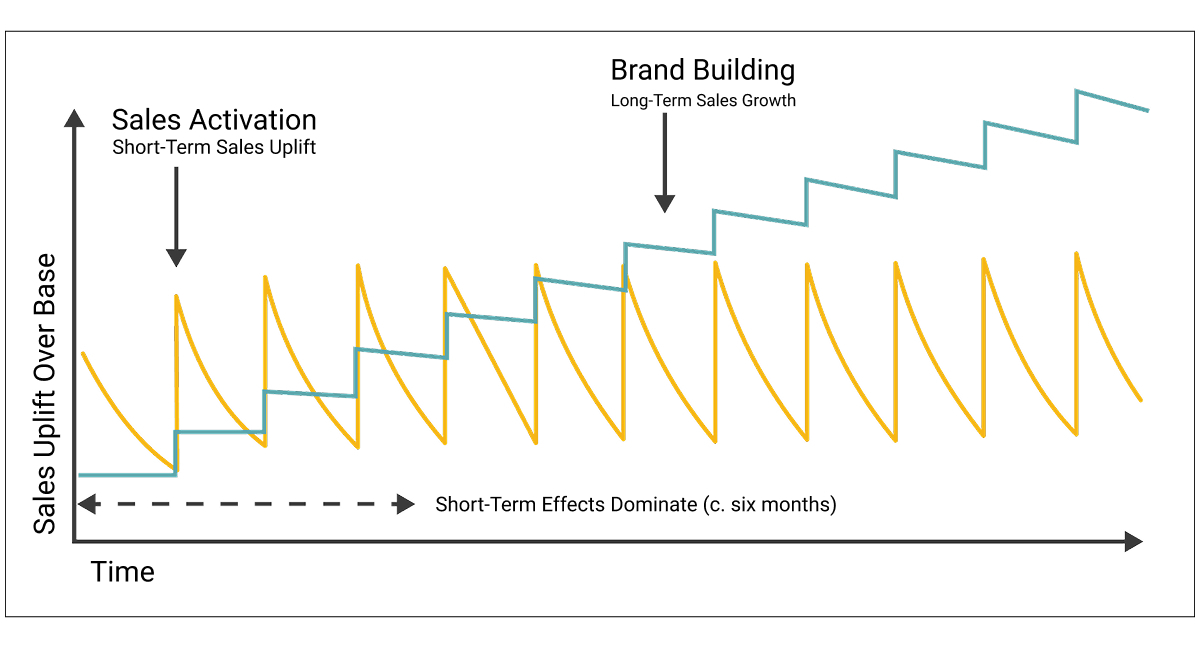
Over time, this creates a cycle:
- Test with PPC. Run ads on high-intent keywords to see what messaging and offers work.
- Track conversions. Find out which keywords and landing pages do the best to get you leads.
- Build SEO pages. Optimize or create pages targeting those proven keywords and messages.
- Watch rankings and results. Once organic traffic and leads start coming in, reduce PPC spend on those keywords.
- Reinvest PPC budget. Shift your budget to test the next batch of keywords or services.
This lets you use PPC and SEO together—without wasting money guessing what might work.
Understanding the PPC Funnel Metrics
Every PPC campaign follows a basic funnel. First, people see your ad, then they decide whether to click, then they either contact you or they don't.
Every funnel has three main types of metrics to track:
- Volume metrics (VM[n]) that measure the quantity of things like impressions, clicks, leads, customers, etc.
- Conversion metrics (CR[n]) that measure how many inputs are needed to produce desired outputs.
- Time metrics (Δt[n]) that measure how long it takes to convert an input to an output.
We will look at every system or sub-system as a function with an input and an output.
- Each input and output is considered a volume metric, such as the number of leads.
- Dividing the output by the input provides a conversion metric.
- The time it takes for the input to convert into output is the associated time metric.
To measure and improve each stage, you need to track the right stuff.
Impressions
At the very top, we have a metric called impressions. Impressions tell you how often your ad is shown somewhere. But it's not just about being shown. It's about where and when.
On search platforms like Google, your ad position matters. Are you at the top of the page or buried at the bottom?
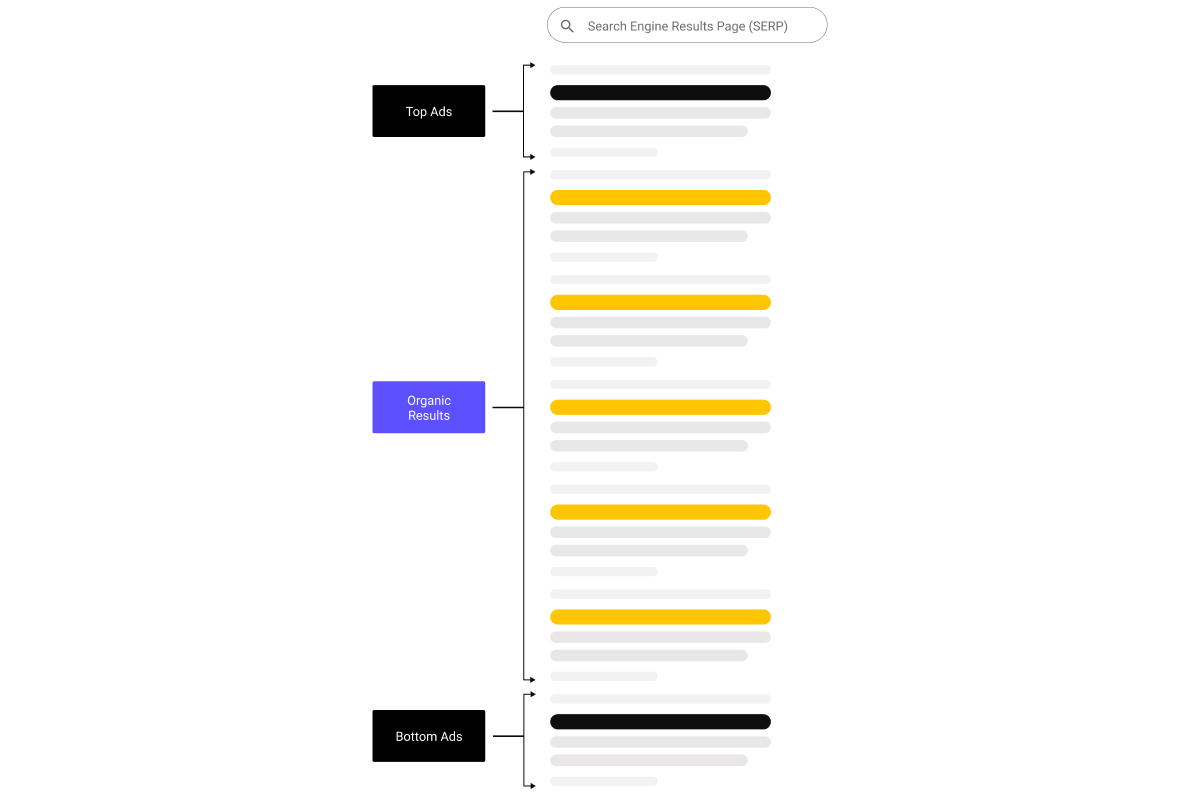
On social and display platforms, placement and frequency matter. How often are people seeing your ad, and in what context?
If impressions are too low, you're usually either not spending enough money or you're settings are limiting who can see the ad.
Before you worry about how many clicks or leads you're getting, make sure your ad is being seen by people first.
Because if your ad isn't being seen, nothing else matters.
Clicks & Click-Through Rate
After Impressions, the next step is clicks. A click means someone saw your ad and was interested enough to click on it to visit your site. More clicks generally mean more changes to get a lead, but only if they're the right clicks.
Click-Through Rate (CTR) is the percentage of people who saw the ad that clicked on it. If your CTR is low, it usually means one of two things: either the wrong people are seeing your ad (that's a targeting issue) or what you're saying to them isn't compelling enough (that's a messaging issue).
Alongside CTR, you have Cost Per Click (CPC), which is how much you're paying every time someone clicks. A high CPC with a low CTR usually means you're paying too much to reach people who aren't interested in what you offer. That's either a messaging problem or a targeting problem.
Inquiries & Take Rate
After someone clicks on your ad, the next question is: do they inquire about my services? We call this an inquiry—when someone takes the action you wanted them to take on your landing page, like filling out a form, clicking a call button, booking an appointment, etc.
Note: You can think of an inquiry like a lead. The only difference is that a lead is someone interested in your services who contacted you and gave you their contact info.
Take Rate is the percentage of people who clicked your ad and took the action you wanted them to on your landing page.
For example, if 100 people click on your ad and 10 of them contact you about HVAC services, then your Take Rate is 10%.
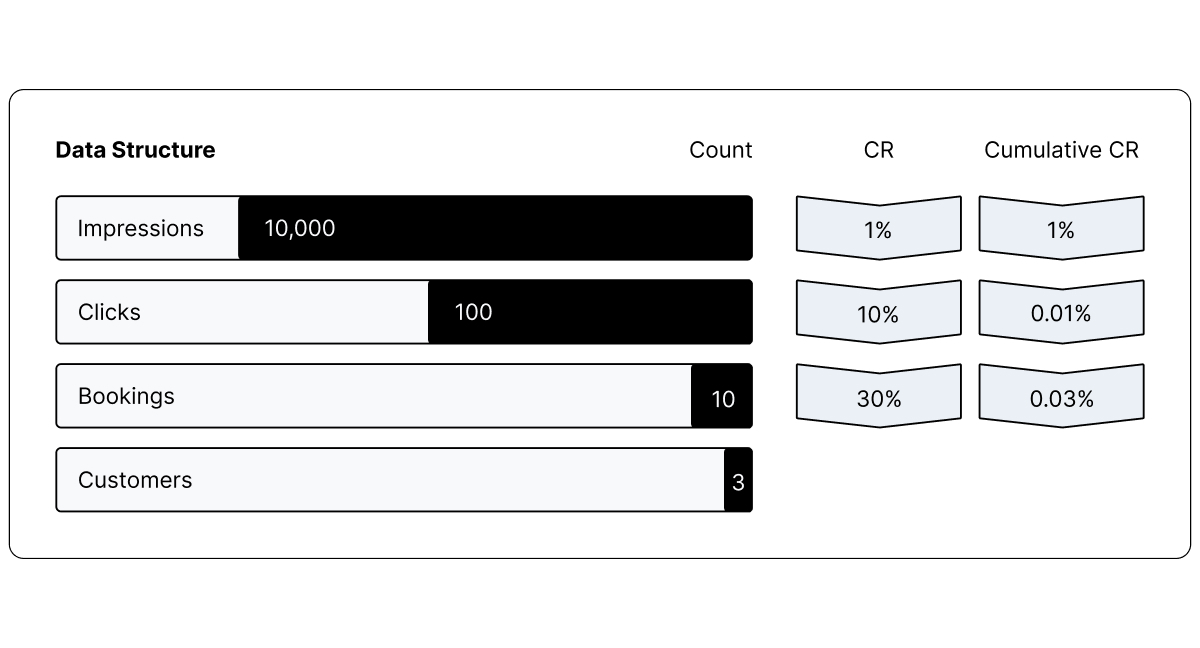
Take Rate tells you how well your landing page or offer is working. If the right people are clicking but not taking the action you want, your problem isn't the ad—it's something to do with the landing page itself.
Notice I said "if the right people are clicking," not "if people are clicking."
That's intentional.
A bad Take Rate doesn't always mean the landing page is the problem—it might mean you're showing the ad to the wrong people. If that's the case, you have a targeting problem, something we'll discuss more in the Targeting section.
The financial metric that pairs with these for service-based businesses is Cost Per Lead (CPL). Cost Per Lead is exactly what it sounds like: the amount you're paying to get a lead.
If 100 click your ad at $5 per click and 10 of them contact you, you've spent $500 to get 10 leads. That puts your CPL at $50. If that's too high, you either need to improve the conversion rate of your landing page or fix your targeting.
Customers & Win Rate
Inquiries and leads are great, but customers are better. Customers are the number of people who end up hiring you.
Win Rate is the percentage of people who inquire about your services and hire you.
Win Rate tells you how good you are at turning leads into customers. That is, how good you are at selling. If your Win Rate is low, there may be a problem with lead quality (that's a targeting problem), but a majority of the time, it's a problem with your sales process.
If you're trying to figure out whether it's a marketing problem or a sales problem, ask yourself the following questions:
- Are you answering the phone when leads call, or do they have to leave a message?
- Are you following up with leads that leave you a voicemail or submit a form within 5 minutes from the time they first contacted you?
- Do you have a sales script and framework you use on sales calls?
If you answered no to any of the questions above, you have a sales problem, not a marketing problem.
The financial metric that pairs with these is Customer Acquisition Cost (CAC). We've already discussed what CAC is and how to calculate it, but if you need a reminder, click here to jump to that section of this article.
Setting Strategy & Goals
Before launching any PPC Campaign, you need to determine two things:
- What outcome are you trying to achieve?
- How will you measure success?
Most campaigns don't go wrong because the ads were bad, but because the strategy wasn't right to begin with.
Short Term vs Long Term
Most HVAC businesses should start by focusing on short-term lead generation as the primary goal. That means the ad campaigns should be structured to generate calls, form submissions, or bookings. Not just views or clicks.
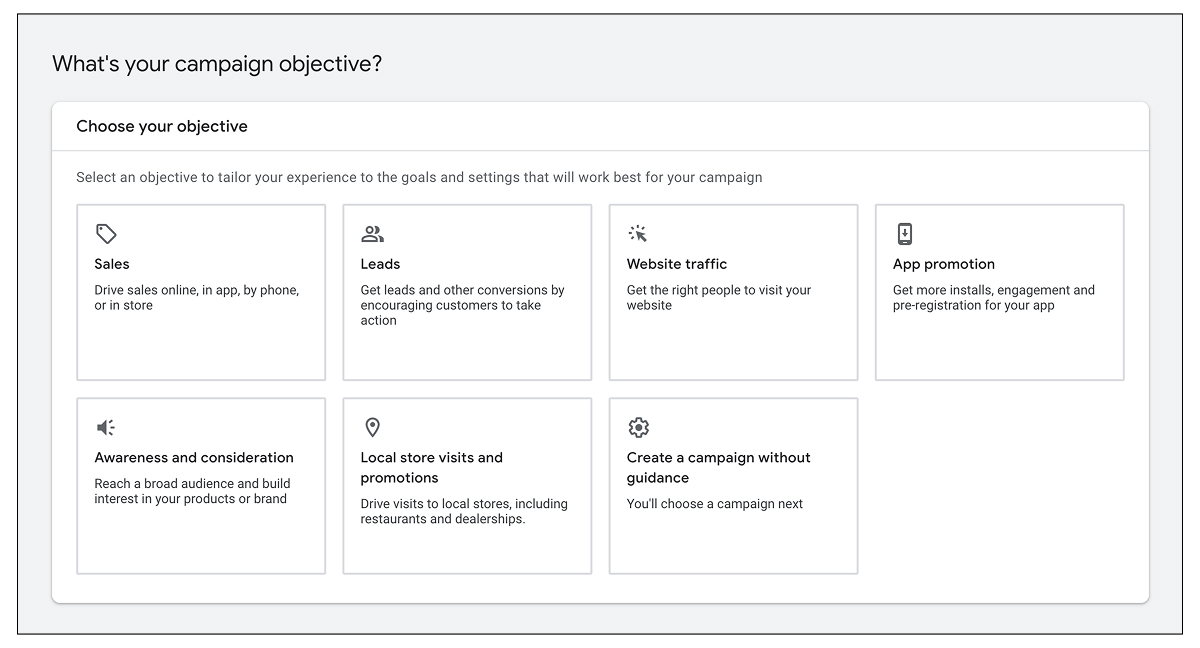
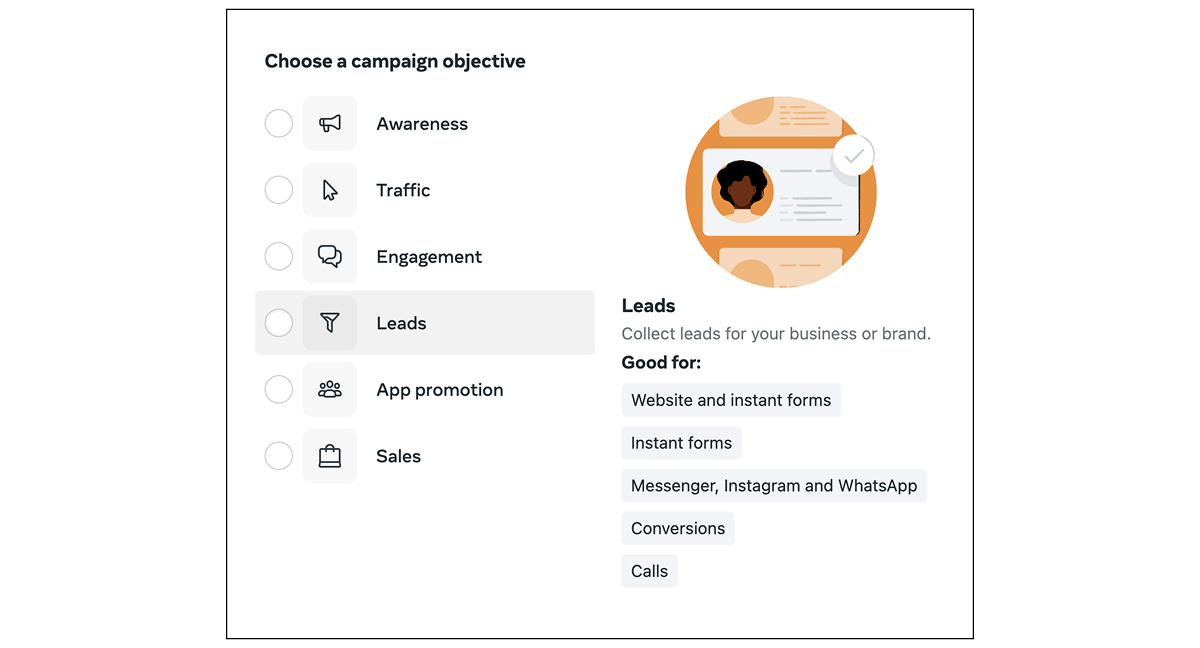
Over time, some percentage of your advertising budget should be focused on building your long-term ability to generate business through brand campaigns. That said, most brand campaigns tend to be configured so that you're paying per impression or consumption, not per click.
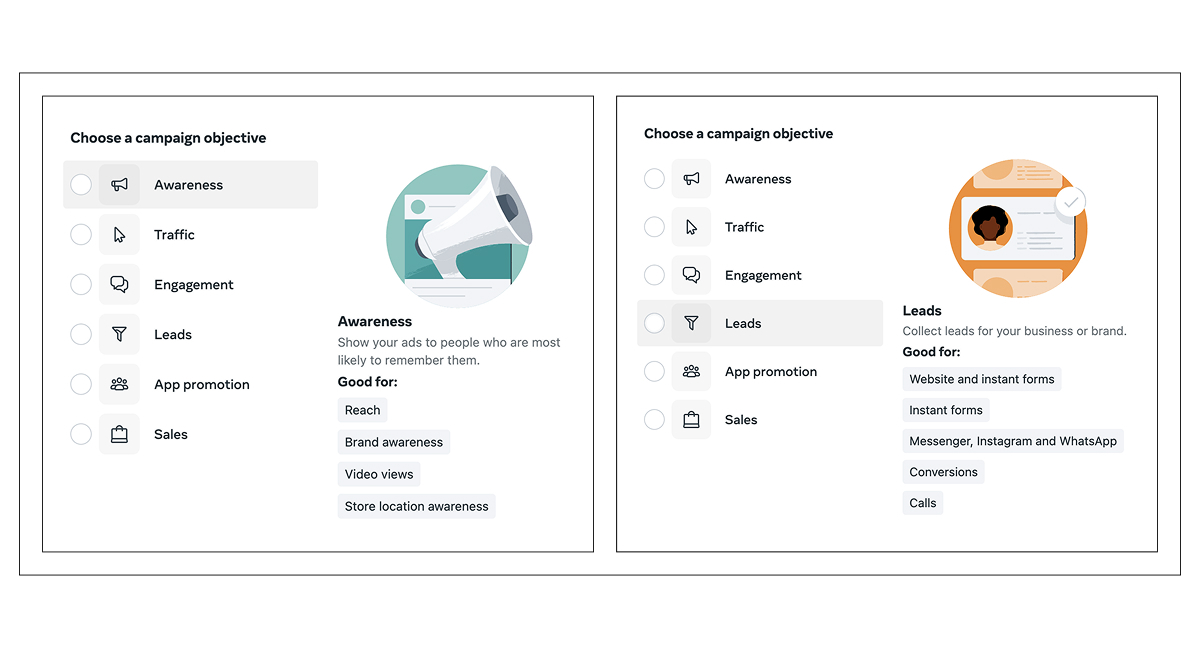
Short-term PPC campaigns get calls today. Long-term brand drives more calls over time and will also improve the performance of your short-term PPC efforts by reducing your CPC and CAC.
Campaign Structure
Each PPC platform uses a similar hierarchy:
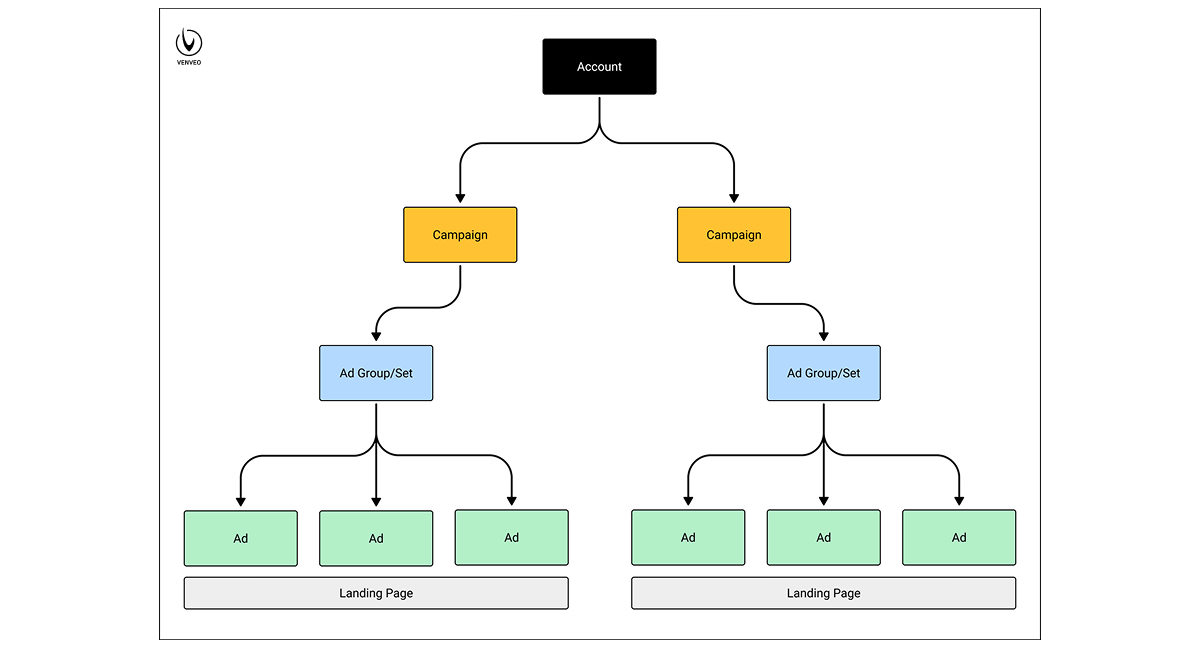
- Campaigns: This is the first level. It’s where you establish the goal of the campaign. For example, lead generation, traffic, awareness, etc.
- Ad Groups / Ad Sets: This is the level where you define who you're targeting and where you're sending them.
- Ads: This is what people see. The headline, the offer, the creative, etc.
Think of it like organizing a job: the campaign is the job type (AC install), the ad group is the neighborhood or customer type (homeowners in ZIP 33101), and the ad is your pitch (limited-time offer).
Targeting
Even the best ad won't work if it's shown to the wrong people. Targeting is how you control who sees your ads, and it's one of the most powerful levers in digital advertising.
Each PPC platform gives you different tools for this, but the core idea is the same across all of them: you want to put the right message in front of the right person at the right time.
Ways to Target
Different platforms let you target people in different ways, and each method serves a different purpose depending on where someone is in the funnel.
Geographic-Based Targeting
Geographic targeting is probably the most important targeting option for HVAC businesses since you can only serve customers within your service area. There's no point paying for clicks from people 50 miles away if you don't travel that far.
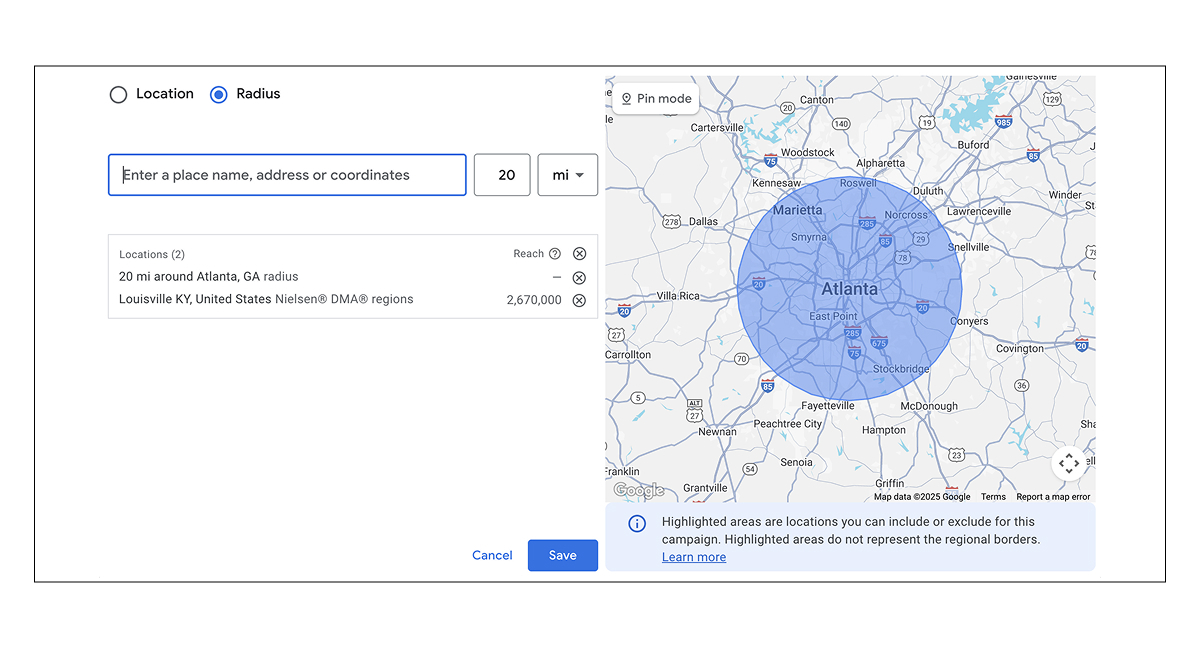
Most platforms let you target by radius around your business location, specific cities, zip codes, or even exclude certain areas. You can get as broad as targeting an entire state or as narrow as specific neighborhoods.
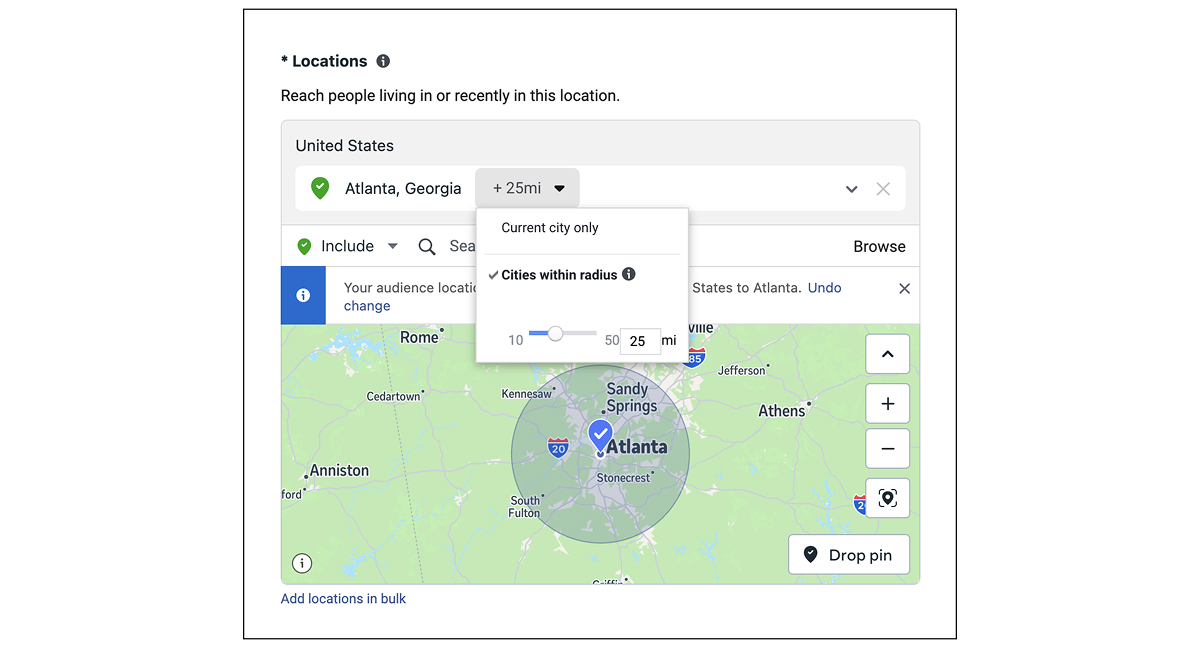
For HVAC businesses, consider targeting a slightly larger area than you normally service during peak seasons when you might be willing to travel further for emergency calls. You can also bid more aggressively for areas closer to your location and reduce bids for the outer edges of your service area.
Target by drive time, not radius, during emergency hours. 15 miles takes 45 minutes in traffic, but 20 minutes at 2 AM.
Some platforms also let you target people who live in an area versus people who are just visiting. For HVAC services, you almost always want to target people who actually live there, not tourists passing through.
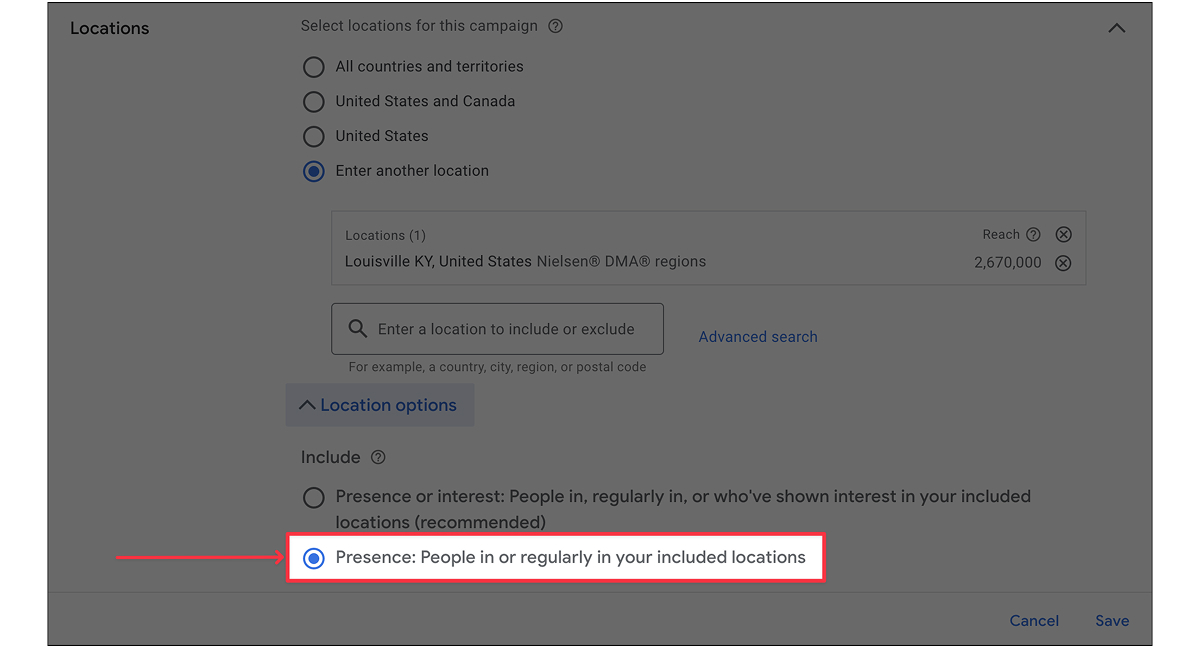
Intent-Based Targeting
Intent-based targeting reaches people who are actively searching for something. Google Search is the best-known example. If someone searches ac repair near me, that’s what we call a high-intent search—meaning they're ready to hire someone.
But intent isn't just about searches related to services. Most people aren't necessarily searching for service providers. They just know they're uncomfortable.
People also search for problems, complaints, and questions related to what you do. These people are aware they have a problem, but may not be sure what the solution is yet.
Target people complaining about energy bills and comfort issues, not just people searching for HVAC services. Keywords like why is my electric bill so high or house too hot upstairs show intent but have less competition than ac repair near me.
Most of your competitors probably aren't bidding on these types of keywords. Get in front of them before they do, and you can get leads for a fraction of the price.
Demographic-Based Targeting
Demographic targeting lets you show ads to people based on who they are. This is based on things like their age, education, income, family situation, and more.
Homeowners are more likely to need HVAC services than renters. Families with young children or elderly relatives care more about consistent comfort and air quality. Higher-income households are more likely to invest in premium systems or regular maintenance.
Google Ads offers homeownership targeting as part of their detailed demographics and household income brackets, though income targeting may have restrictions for housing-related businesses.
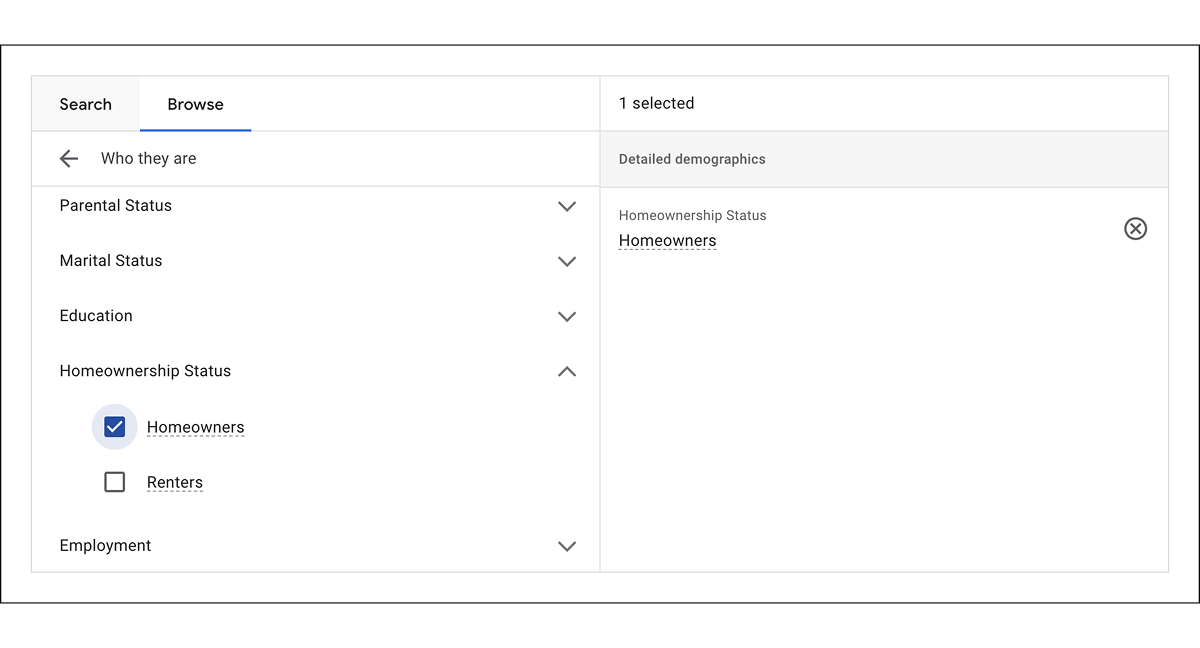
Facebook removed most detailed demographic targeting options, including homeownership status, in 2022 following discrimination lawsuits related to housing, employment, and credit advertising that violated civil rights laws.
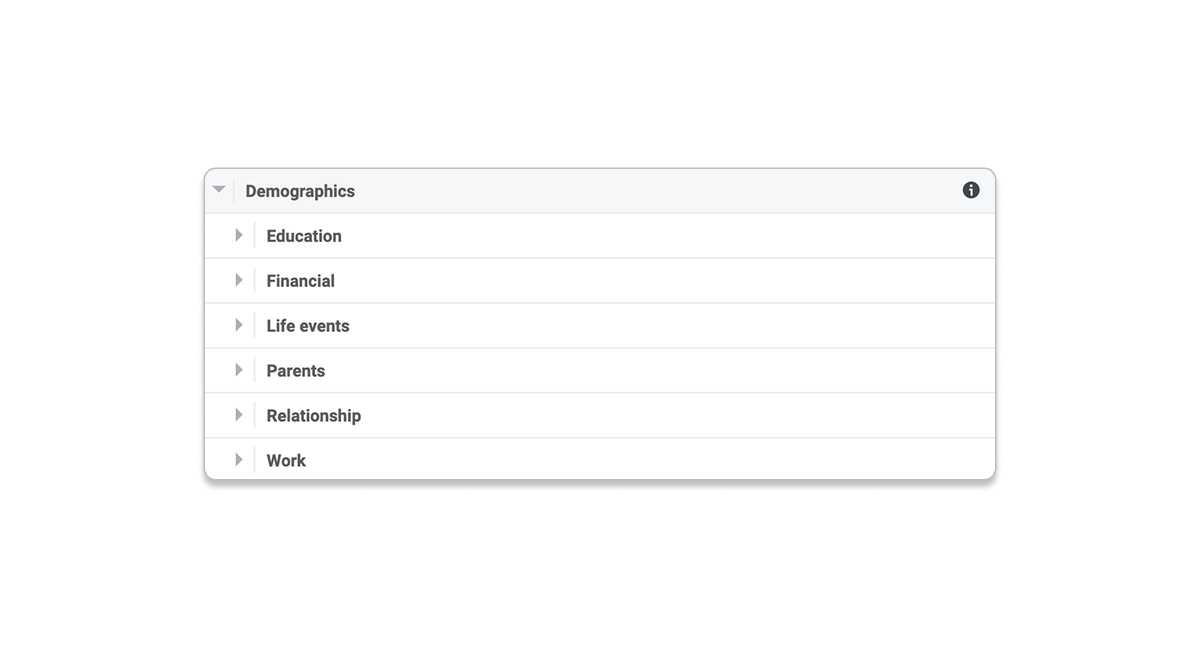
The key is understanding that demographics work best when combined with other targeting methods. A 45-year-old homeowner in a high-income neighborhood searching ac not cooling could be a better prospect than any 45-year-old homeowner.
Psychographic-Based Targeting
Psychographic targeting shows ads to people based on their interests, values, and lifestyle choices. Platforms like Facebook, Instagram, and YouTube let you reach users who match your ideal customer profile—even if they're not searching for HVAC services right now.
For HVAC businesses, this might include targeting people interested in home improvement, energy efficiency, smart home technology, or homeownership.
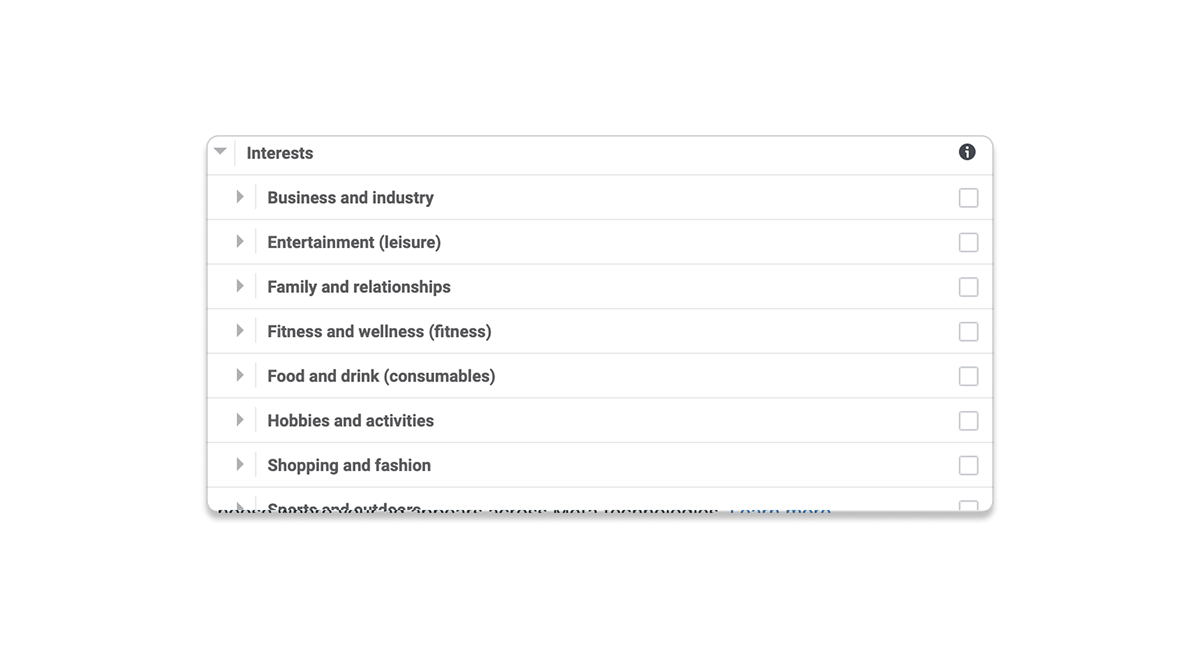
You can also target people who follow home renovation shows, engage with energy-saving content, or show interest in indoor air quality topics.
Behavioral-Based Targeting
Behavior-based targeting shows ads to people based on what they've already done online. This works because past actions often predict what someone might need next.
For example, you can show ads to people who visited your website but haven't called you yet. Or you can find new customers who are similar to people who’ve already hired you—the platform looks at your best customers and finds other people with similar online behavior.
Situation: Let's say you're an HVAC business serving both homeowners and commercial clients.
A homeowner with no heat at 8 PM is making an emotional, urgent decision. A facility manager researching contractors is doing methodical research during business hours.
Run campaigns targeting residential buyers during emotional times when they're most likely to call (evenings and weekends) while having separate campaigns targeting businesses during regular business hours.
Solution: Run separate campaigns. Schedule residential ads for evenings and weekends with messaging like "Same-Day Emergency Repair." Run commercial ads during business hours (8 AM - 5 PM) with messaging like "Licensed Commercial HVAC - Free Estimates."
Same business, different customers, different campaigns.
Targeting Options Vary Across Platforms
Some of the most common targeting methods you’ll be able to use include:
Each platform has strengths:
| Targeting Type | Google Ads | Facebook/Instagram | YouTube | Best For |
|---|---|---|---|---|
| Geographic | Radius, cities, zip codes | Location, radius | Location targeting | Local service areas |
| Demographic | Age, gender, homeowner status, income | Age, gender (limited options) | Age, gender, parental status | Homeowners, specific age groups |
| Keywords | Search terms, match types | Not available | Not available | High-intent searches |
| Psychographic | Interests, in-market audiences | Interests, behaviors | Interests, topics | Lifestyle-based targeting |
| Behavioral | Past site visitors, customer lists | Website visitors, engagement | Video viewers, subscribers | Retargeting, lookalikes |
| Placements | Specific websites, apps | Specific platforms | Specific channels | Brand safety, niche audiences |
Google and Bing excel at intent-based keyword and geographic targeting.
Meta is great for psychographic and behavioral targeting. Their machine learning algorithm is phenomenal at finding the right people to show your ads to.
YouTube is an all-around good advertising platform if you have plenty of video assets to use. It combines the visual impact of TV commercials with the precise targeting of digital. For HVAC businesses, I think they work best for impression-based campaigns rather than PPC.
Both Google and Meta try to sneakily expand your audience by default. Google adds what's called "Display Network" placements to search campaigns, while Facebook uses what's called "Audience Expansion."
These settings can tank your lead quality and burn your budget fast. Turn them off unless you know exactly why you're keeping them on.
Google Ads Considerations
Understanding Keyword Match Types
In Google Search Ads, it's not just what keywords you choose, but how you choose to match them. Match types control how closely someone's search needs to match your keyword for your ad to show.
There are three main types:
- Broad Match: With broad match, your ads may show for searches that include any related terms, even if they're not your keyword. For example, the keyword ac repair might trigger your ad to show for a search like why is my air conditioner loud or hvac troubleshooting. Broad match casts a wide net. Some of the stuff it captures can be useful, but a lot will be a waste. We'll discuss how to deal with waste later using negative keywords.
- Phrase Match: With phrase match, your ad will show when someone searches for your keyword phrase or a close variation, in the same order. ac repair might trigger emergency ac repair near me but not repair my ac unit.
- Exact Match: Your ad shows only when someone types your keyword exactly or very close to it. [ac repair near me] would match ac repair near me or ac repairs near me but not cheap ac repair service.
| Match Type | Symbol | Example Keyword | Appears For | Example Search |
|---|---|---|---|---|
| Broad Match | none | ac repair | car ac repair | how to fix car ac |
| Phrase Match | " " | ac repair | emergency ac repair | emergency ac repair near me |
| Exact Match | [ ] | [ac repair] | ac repair | ac repair |
| Broad Match | none | water heater repair | car heater repair | fix car heater |
| Phrase Match | " " | emergency hvac repair | emergency hvac repair service | 24/7 emergency hvac repair service |
| Exact Match | [ ] | [hvac contractor] | hvac contractor | hvac contractor |
Google defaults new keywords to Broad Match and often recommends enabling it. Ignore those recommendations. You can ignore most in-platform recommendations Google gives you.
More often than not, the recommendations benefit Google more than you and waste your money.
Each type serves a different purpose.
- Use broad match to discover new keywords you haven't thought of and to test keywords you have. Just make sure you monitor things closely and pair them with a strong negative keyword list (see negative keywords for more info).
- Use phrase match when you want moderate control but are okay with reaching some variations you may not have thought of.
- Use exact match when precision and lead quality matter most. Especially for keywords with high cost-per-click metrics.
As mentioned previously, most of Google's recommendations are things you can ignore. However, Google will automatically apply its recommendations by default and change your settings if you don't explicitly prevent it from doing so.
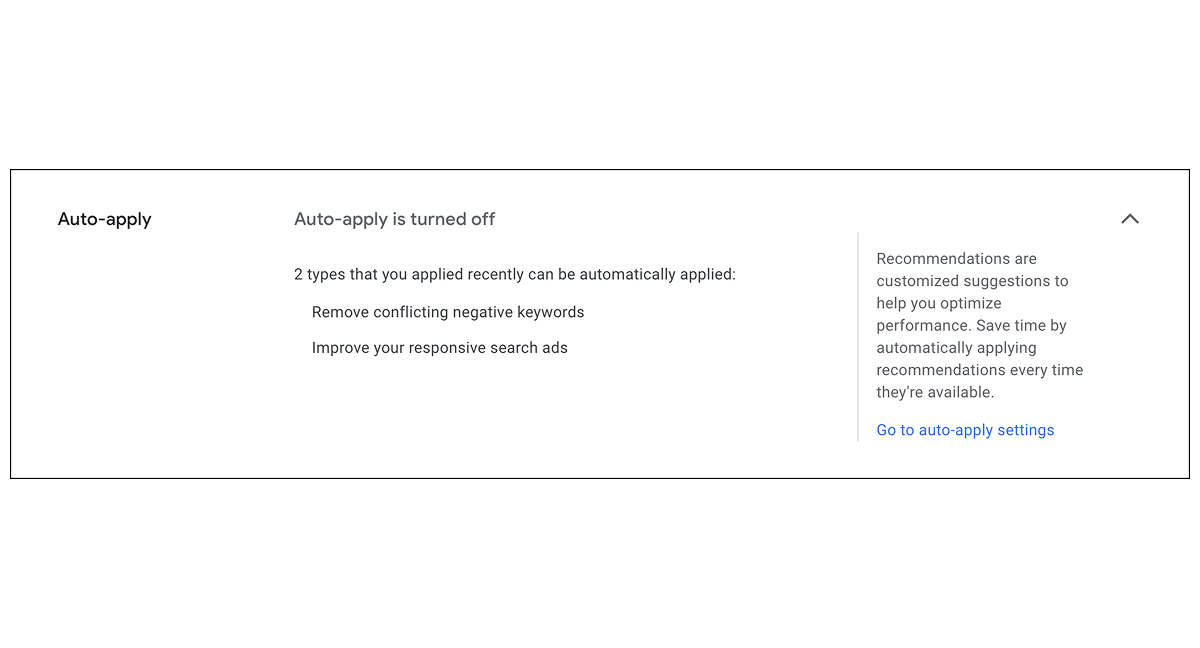
Example HVAC PPC Keyword List
When running Google Search Ads, the keywords you target determine who sees your ad. The best-performing keywords are often specific, service-oriented, and location-based.
Generic terms like hvac or air tend to bring in low-quality clicks and waste your money. Instead, you want to focus on phrases that indicate the person is ready to hire someone or has a problem you can solve.
You want a mix of:
- High-Intent Service Terms like ac repair near me
- Problem-Based Terms like furnace not blowing hot air
- Location Modifiers like hvac installation miami
This table gives you a sample of keywords, the estimated number of times they're searched per month, and the estimated cost per click.
| Keyword | Search Volume | CPC |
|---|---|---|
| ac repair | 60,000 | $2.00 |
| water heater repair | 44,000 | $5.00 |
| hvac repair | 39,000 | $5.00 |
| air conditioner repair | 25,000 | $15.00 |
| hvac services | 16,000 | $3.00 |
| heater repair | 13,000 | $1.60 |
| hvac service | 13,000 | $4.50 |
| ac service | 9,900 | $2.50 |
| hot water heater repair | 9,900 | $6.00 |
| hvac contractor | 9,500 | $5.00 |
| emergency hvac repair | 5,900 | $1.50 |
| commercial hvac repair | 5,200 | $5.00 |
| hvac repair service | 4,900 | $2.00 |
| tankless water heater repair | 4,200 | $2.50 |
| commercial hvac service | 4,100 | $12.00 |
| gas water heater repair | 4,100 | $1.20 |
| emergency air conditioner repair | 3,800 | $3.50 |
| water heater repair service | 3,700 | $0.90 |
| emergency ac repair | 3,700 | $8.00 |
| water heater services | 3,400 | $2.00 |
| emergency water heater repair | 3,400 | $1.30 |
| ac repair service | 3,300 | $1.20 |
| home ac repair | 3,200 | $15.00 |
| air conditioner service | 3,200 | $11.00 |
| 24 hour ac repair | 3,200 | $16.00 |
| electric water heater repair | 3,000 | $1.80 |
| hvac air conditioning service | 3,000 | $0.70 |
| hvac repair services | 2,900 | $0.90 |
| hvac contractors | 2,700 | $1.80 |
| ac repair company | 2,700 | $2.50 |
| ductless ac repair | 2,600 | $10.00 |
| auto ac repair | 2,500 | $1.90 |
| ac services | 2,500 | $11.00 |
| hvac maintenance service | 2,400 | $1.30 |
| pool heater repair | 2,400 | $4.00 |
| hvac repair companies | 2,400 | $4.50 |
| ac repair cost | 2,300 | $5.00 |
| ac contractor | 2,300 | $7.00 |
| hvac duct repair | 2,300 | $7.00 |
| water heater service | 2,100 | $12.00 |
| hvac installation service | 2,100 | $9.00 |
| tankless water heater service | 2,100 | $11.00 |
| emergency hvac service | 2,100 | $18.00 |
| residential hvac repair | 2,100 | $2.50 |
| ac repair houston | 2,100 | $20.00 |
| emergency hot water heater repair | 2,100 | $1.30 |
| repair hvac | 2,000 | $2.00 |
| water heater repair cost | 2,000 | $6.00 |
| commercial ac repair | 2,000 | $0.40 |
| ac repair services | 1,900 | $1.70 |
Creating Ads
Good targeting gets you in front of the right people. Good ads get them to click.
Your ad has one job: get the right person to take the next step. That starts with the headline, continues with the body copy, and—depending on the platform—is reinforced with a visual.
Use Headlines to Grab Attention
In some ad formats, like Google Search, your headline is the first thing people see. In other formats like social, display, or video, your visual might be the thing that they notice first.
Either way, your headline still plays a key role: grabbing someone's attention.
Avoid fluff and cleverness. Focus on calling out the problem and the ideal person you want to see it.
❌ BAD EXAMPLE: Need AC Repair?
✅ GOOD EXAMPLE: Miami Homeowners: AC Not Cold? Same-Day Repair in 60 Seconds
The first one just presents a problem. The second speaks to the right person, addresses a specific problem, and offers a fast solution—all in one line.
Don't optimize for general clicks. Customers respond to hyperlocal, problem-specific messaging. When people feel like the ad is “for them,” they’re far more likely to click. That’s what makes a headline effective.
Get inspiration for Google Ads by searching for keywords in different markets and even across industries to get ideas. For Facebook, use their Ad Library and find ads that have been running for a long time to see what's probably working for them.
Body Copy: Make the Next Step Obvious
What you say after the headline depends on the platform you're using. Each one gives you different amounts of space and formatting options. But the goal is the same: make it elaborate on your headline to make it clear what the next step is and why it's worth taking.
Google Ads
In search ads, space is limited but intent is high. People are already looking for something, so you just need to show them you're the right choice.
Search ads have options to include a description and ad extensions.
Descriptions

Use the descriptions to reinforce your offer. For example, let's say someone searches for ac repair near me. That means they're ready to hire someone now. Your copy needs to speak directly to that moment.
Instead of saying something vague like "Experienced HVAC Technicians," say something like, "Same-Day AC Repair with No After-Hours Fees."
That addresses the two things they probably care about most: urgency and cost.
You can also say things like, "Locally Owned. 20+ Years Serving {City}" to build trust and familiarity. These small touches convey that you're nearby, have experience, and are reliable.
Ad Extensions
With Google Ads, you're limited in space, but that limitation is something you can take advantage of. When someone searches for something like ac repair near me, your ad won't be the only one showing. Google stacks multiple results, and the ones that take up more visual space tend to stand out a bit more.
That's where ad extensions come in.
Call Extensions
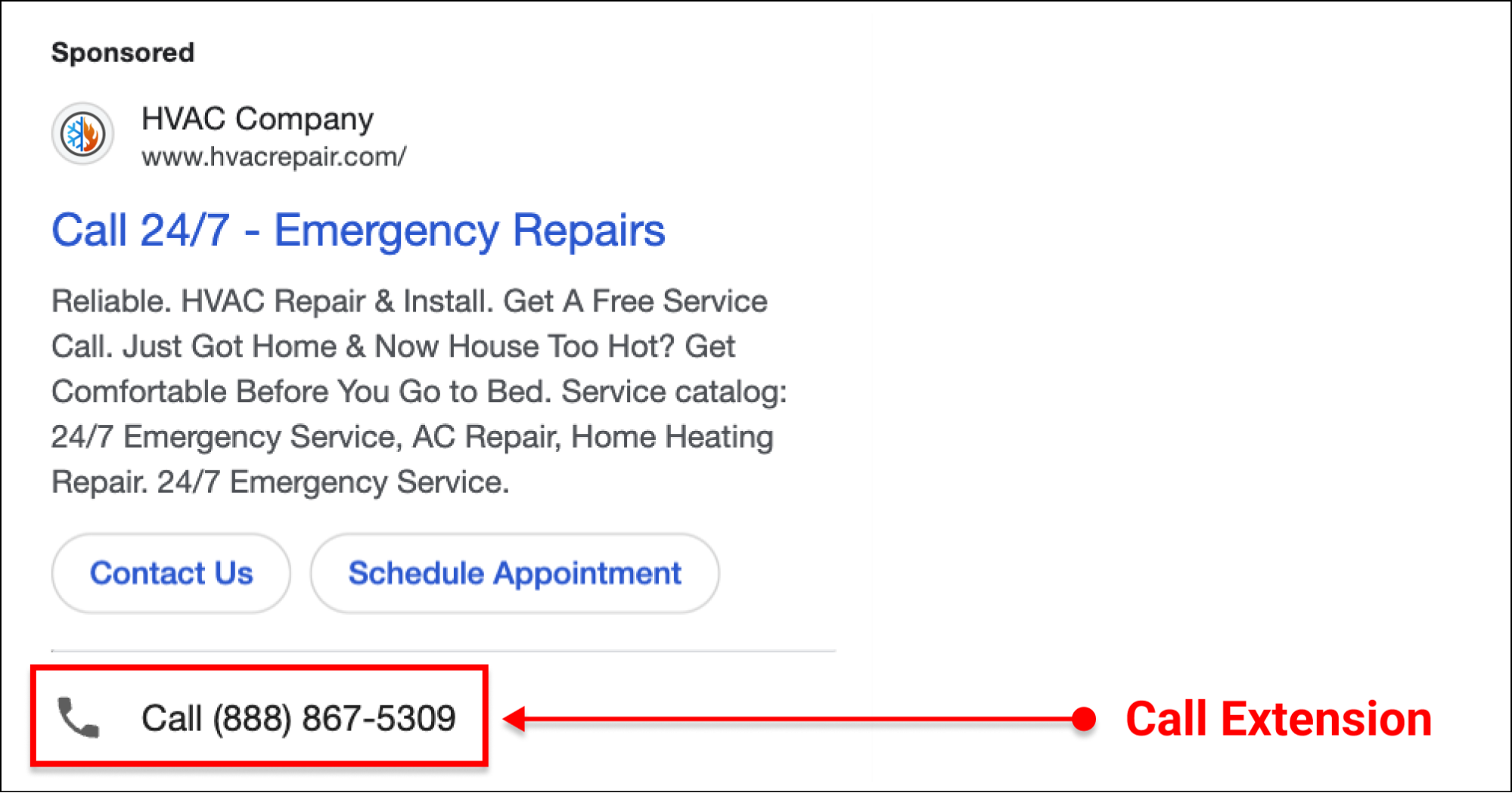
This adds a phone number to your ad so people can call you directly from the search results. On mobile, this becomes a tap-to-call button.
If your team is able to answer calls live, this is one of the highest-converting actions you can drive. But don’t use it unless someone is reliably picking up—sending a lead to voicemail wastes money and trust.
PRO TIP: You can also configure your ads to dynamically bid more for ads that include this type of extension on mobile than on other devices.
Sitelink Extensions
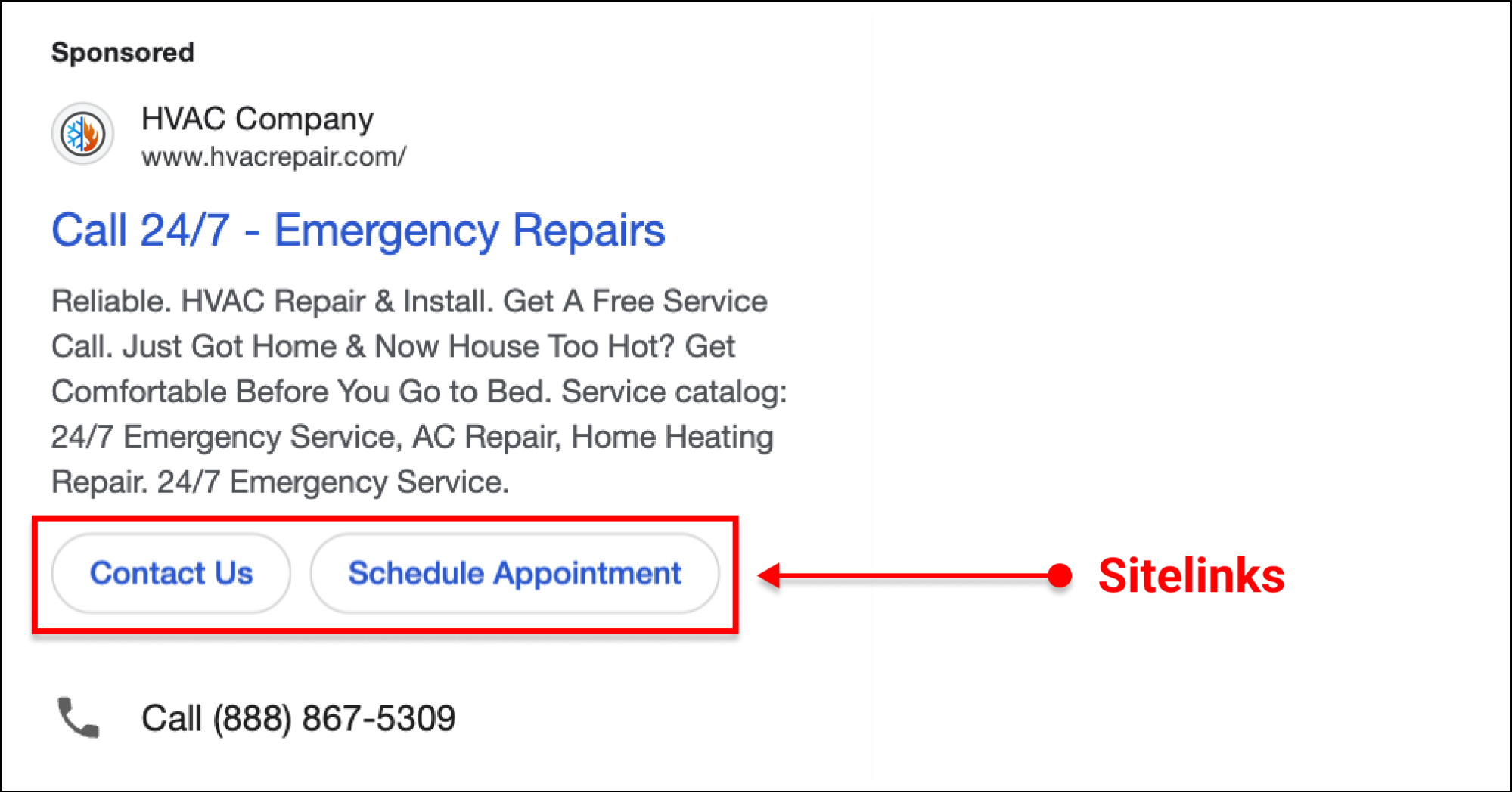
These are additional links that appear below your main ad copy. Each one includes a clickable headline and optional description text.
Use sitelinks to give people shortcut access to specific high-intent pages like “Book Now,” “Pricing,” “Financing,” or “Our Reviews.” Even if someone doesn’t click them, just seeing those options builds trust and gives your ad more presence.
Image Extensions
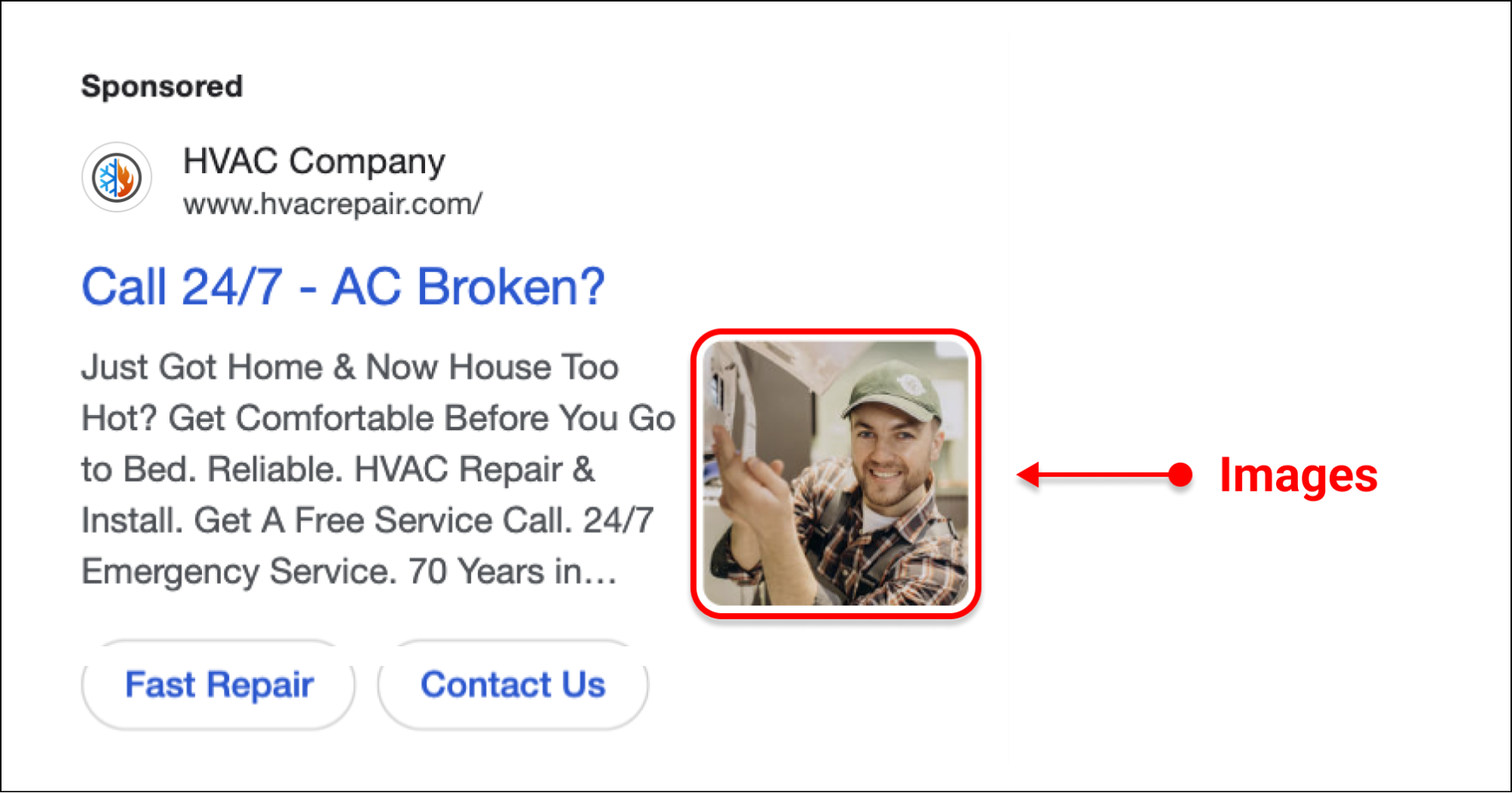
Image extensions let you add relevant photos alongside your search ad. These images appear as small thumbnails next to your headline, especially on mobile, and help your ad stand out a lot more.
For HVAC businesses, this is a major opportunity to show what you do and build trust at a glance. Photos of branded service vehicles, clean equipment installs, or smiling techs on the job can immediately signal professionalism and legitimacy.
A few things to keep in mind:
- Stick with real images if possible. Avoid generic stock photos.
- Use clear, uncluttered shots that still look good as small thumbnails.
- Google may crop images, so make sure the key subject is centered.
Image extensions don’t show 100% of the time, but when they do, they can significantly boost click-through rate by making your ad look more established and credible.
Callout Extensions

Callouts are short snippets of text (25 characters max) that appear below your description. They’re not clickable but give extra context to help close the deal.
This is the perfect place to answer questions a buyer may not even realize they’re asking:
- “No After-Hours Fees”
- “Same-Day Service Available”
- “Locally Owned & Operated”
- “Licensed & Insured”
These build credibility, address objections, and make you look more established than competitors who skip this step.
Structured Snippets

Structured snippets let you highlight specific aspects of your services in a predefined format. Google gives you header options like “Services,” “Brands,” or “Types.”
Example:
Services: AC Repair, Furnace Repair, Duct Cleaning, HVAC Installation
This gives people a quick scan of what you offer. It’s especially helpful if they’re not sure exactly what they need.
Location Extensions

These pull in your business address from your Google Business Profile and display it under your ad. For HVAC businesses, this builds local trust fast.
Someone searching “AC repair near me” will feel a lot more confident clicking on an ad that shows a nearby location instead of guessing whether you're actually in the area.
Lead Form Extensions

Instead of sending someone to your website, this lets you capture contact info directly in the ad. Google provides a mobile-friendly form that expands when clicked.
This can reduce friction, especially on mobile, but you need to be quick to follow up. If someone submits a form and doesn’t hear back quickly (within 5 minutes), the lead goes cold fast. Odds are they're reaching out to multiple providers, so whoever gets to them first is probably going to win them as a customer.
Facebook & Instagram Ads
Your ad is competing with vacation photos, memes, local news, and dopamine-inducing short-form videos. People aren't on these platforms to see HVAC ads. They're on them to get entertained.
So if you're going to advertise on them, you need to do three things quickly:
Describe the problem or situation they'll recognize, followed immediately by an easy-to-understand, valuable solution as an offer, and ending with a low-friction call to action.
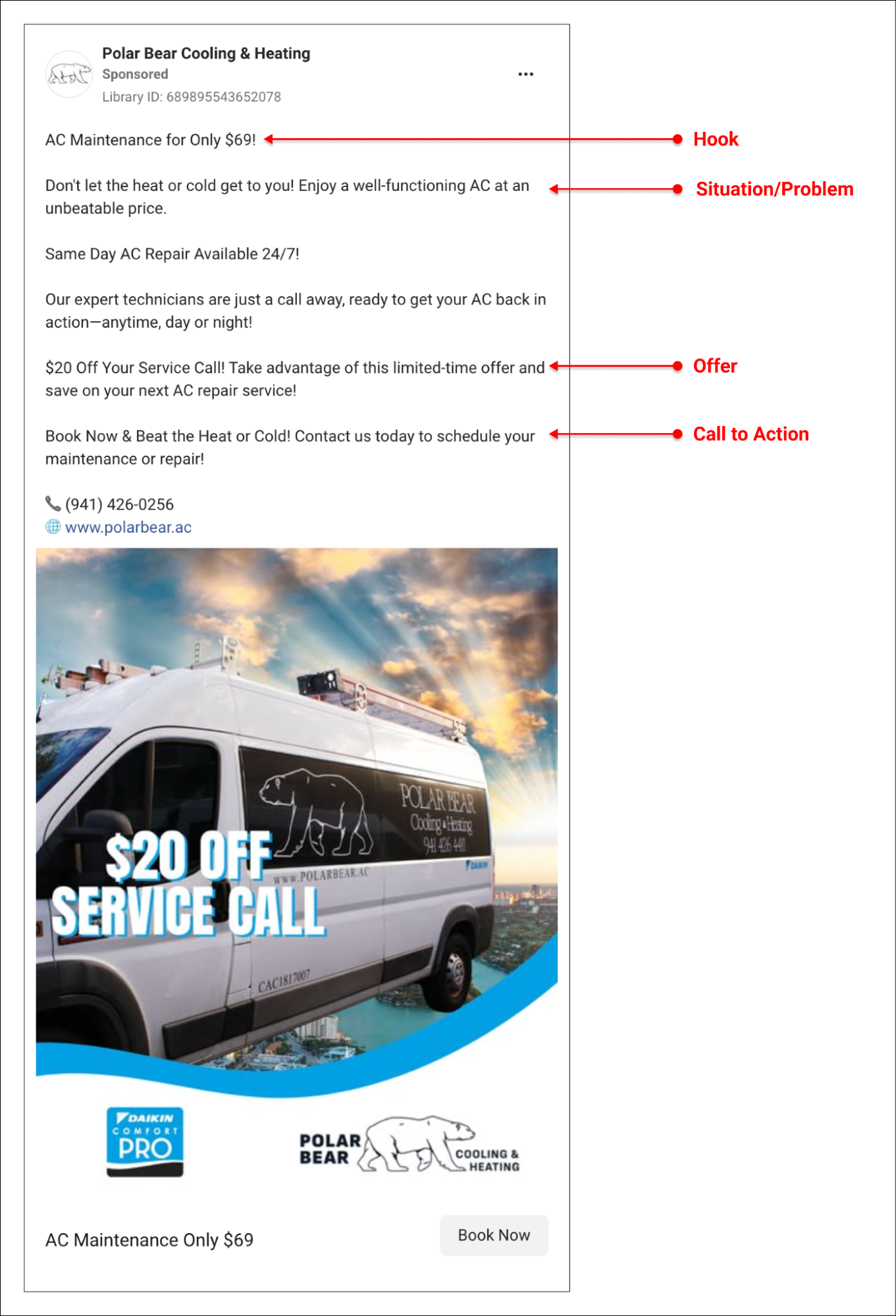
This isn’t the place for a company bio or service list. Your copy should focus on one problem, one offer, and one next step. Make it easy to understand, easy to act on, and easy to say yes to.
The same applies when you're using a video as the main creative element. The first three seconds should hook the person the way your headline would. You hook them with both your words and visuals.
Get their attention. Describe their problem. Offer a solution. Tell them the next steps.
Improving Ad Campaigns
Launching a campaign is just the beginning. To get results (and keep getting them), you need a system for spotting what’s not working and knowing how to fix it.
Most underperforming campaigns don’t need to be rebuilt from scratch. They just need to be tuned.
Review Things on a Regular Cadence
Every few weeks, look at your funnel metrics from top to bottom and ask yourself the following questions:
- Are enough people seeing my ad? Check Impressions count.
- Are the right people clicking my ad? Check CTR and CPC metrics.
- Are the people clicking my ads turning into leads? Check Take Rate and CPL.
- Are leads becoming customers? Check Win Rate and CAC.
If your impressions are low, you might need to increase your advertising budget or widen your targeting criteria to make them less narrow.
If your CTR is low, your ad might not be relevant enough. Adjust your copy to make it more relevant. Use local landmarks and neighborhood names in ad copy instead of generic location terms.
If your CPC is high and your CTR is low, you're paying too much to reach the wrong people.
If your Take Rate is weak, your landing page may not be pulling its weight and needs improvement.
And if CPL is decent but few people become customers, your sales process might be the issue, not your ads.
| Problem | Metric(s) | Solution |
|---|---|---|
| Not enough people are seeing your ad | Impressions | Increase ad budget or widen targeting |
| People aren't clicking your ad | CTR | Improve ad relevance; add local landmarks/neighborhood names |
| High CPC + Low CTR | CPC, CTR | You're overpaying to reach the wrong people; refine targeting and copy |
| People click but don’t become leads | Take Rate, CPL | Improve landing page content, design, or offer |
| Leads aren’t converting to customers | Win Rate, CAC | Evaluate and improve the sales process |
Four Key Optimization Levers
Once you know what's underperforming, there are four main levers you can work with to improve things.
- Audience: Are you targeting the right people? Try refining or expanding the audience, testing lookalikes, or excluding poor-performing cohorts.
- Creative: Is your messaging resonating? Try new headlines, frame the problem in different ways, and add fresh visuals. Even small changes can improve CTR and Take Rate. Most companies are not creating enough variations. To put this in perspective, we recommend 20-30 new variations every month.
- Budget: Are you spending enough to gather meaningful data? Too little ad spend means your ads won't get seen enough to optimize them.
- Bids: Are you competitive in the auction? You might need to increase your bids to increase your impressions. You can also reduce bids on low-performing segments (or remove them entirely).
Change only one thing at a time so you know what makes a difference.
Negative Keywords with Google Ads
In Google Search Ads, your ads show up based on the keywords you're targeting. But they can also show up for other, related searches that Google thinks are close enough. Sometimes that works in your favor. Other times, it just creates waste.
You can reduce this by using negative keywords.
Negative keywords tell Google, "Don't show my ad if the search includes this word or phrase."
For example, let's say you're running ads for AC repair services. You might show up for searches like:
- diy ac repair
- free ac repair
- ac repair jobs
- ac repair youtube tutorials
Those people probably aren't looking to hire you. They're looking to fix it themselves, find free help, or apply for a job. But if you don't tell Google to exclude those kinds of searches, your ad could still show up, and you'll still pay if someone clicks on it.
Negative keywords help you block that. You can add words like diy, free, job, video, or youtube to your negative keyword list, and Google will stop showing your ad when those words are included in the search.
Review your Terms Report periodically to find common things your ad is triggering for and being clicked on that are irrelevant. Then add them to your negative keyword list.
Putting it to Work
Doing PPC for HVAC businesses isn't about setting up things and hoping for the best. It's about understanding the steps people go through when buying your service, getting the right message in front of the right people, and continuously improving things based on observable data.
To succeed with PPC, treat it as a system to be maintained, not a set-it-and-forget-it solution. Track your metrics, test your messaging, and understand that every click should somehow get that person closer to becoming a customer.
Start with Google Search Ads targeting high-intent keywords in your service area.
Get comfortable with the basics: tracking conversions, managing negative keywords, and optimizing your landing pages. Once you're consistently generating 30+ leads per month, then you can start exploring Google PMAX.
Don't start adding other platforms into the mix until you've maxed out the performance of the first one.
Final Advice: Most of your competitors are making the same fundamental mistakes covered in this guide. They're using broad match keywords without negative lists, targeting everyone instead of ideal customers, and measuring clicks instead of customers. Give yourself a competitive advantage by not doing that or give yourself an ever better competitive advantage by hiring Venveo → Learn more





